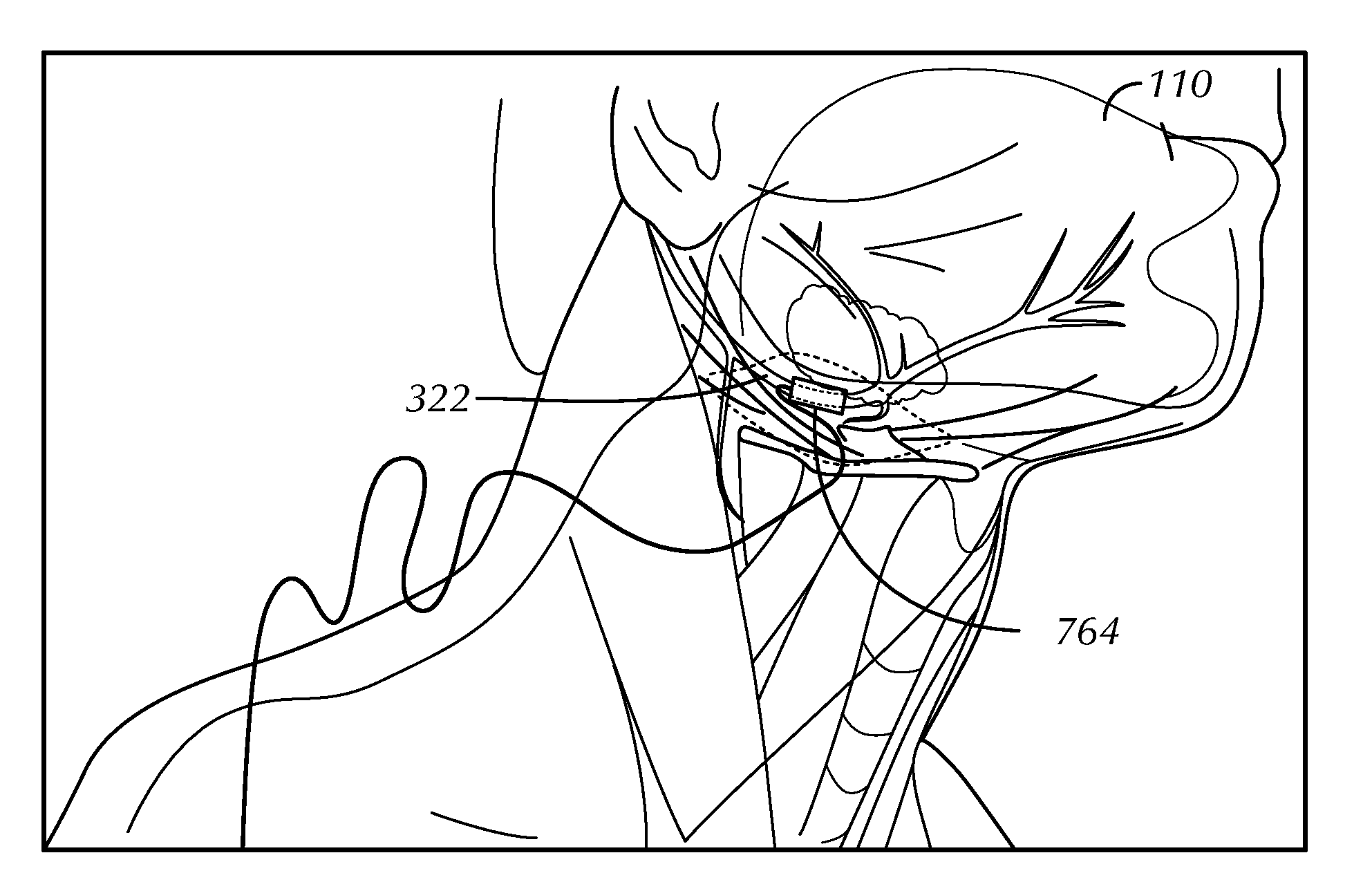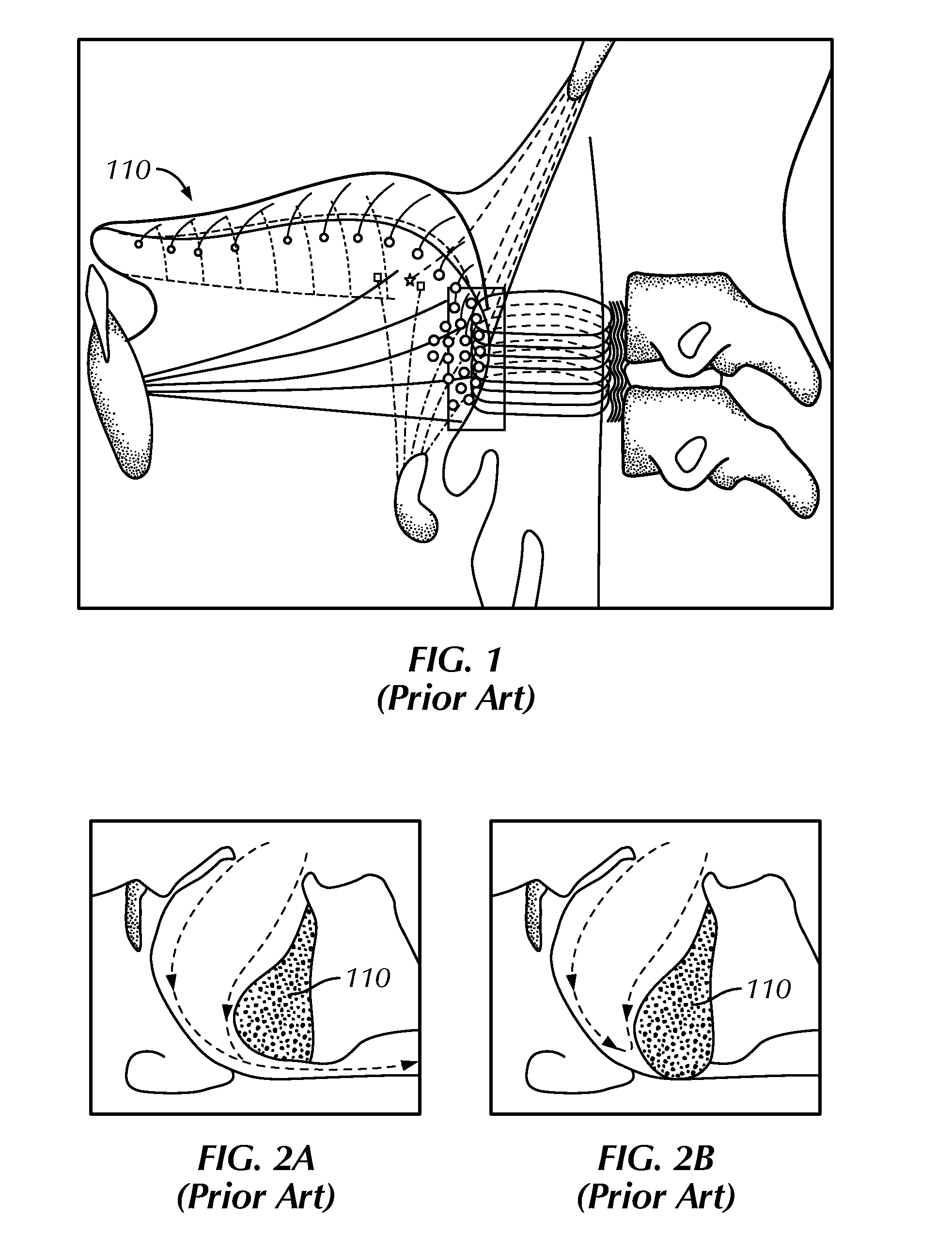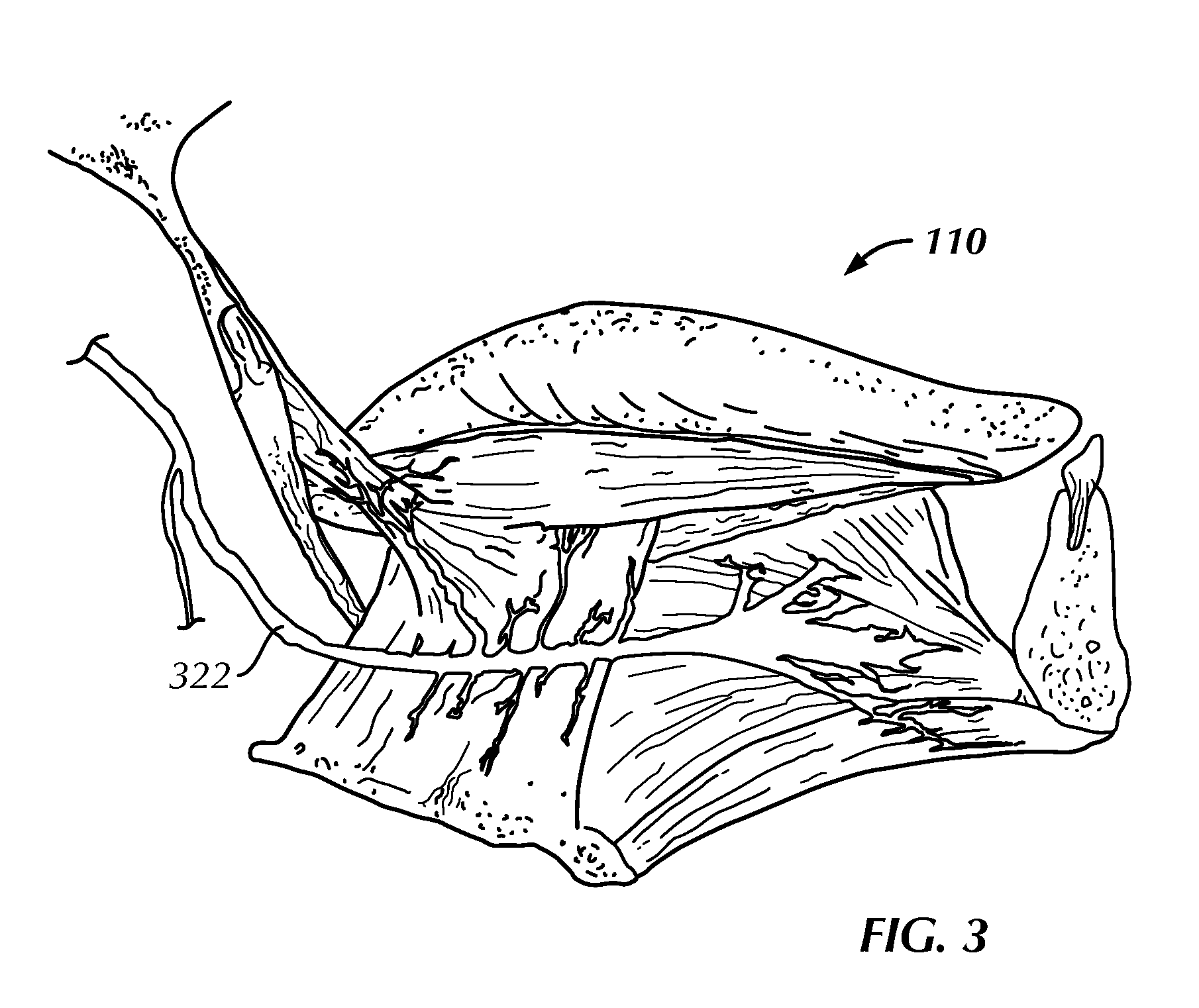System for stimulating a hypoglossal nerve for controlling the position of a patient's tongue
a technology of hypoglossal nerve and patient tongue, which is applied in the direction of instruments, artificial respiration, therapy, etc., can solve the problems of insufficient muscle tone of tongue, insufficient oxygen intake, and interruption of sleep (episodes or micro-arousals). achieve the effect of exemplary strength-duration curv
- Summary
- Abstract
- Description
- Claims
- Application Information
AI Technical Summary
Problems solved by technology
Method used
Image
Examples
Embodiment Construction
[0084]Similar to the embodiments described in U.S. patent application Ser. No. 12 / 572,758, which is hereby incorporated by reference in its entirety, the system described herein operates in an open-loop continuous fashion to stimulate the hypoglossal nerve (HGN) of a patient suffering from OSA. Referring to FIG. 3, the Hypoglossal Nerve (HGN) 322 is primarily a motor nerve and activates the various extrinsic and intrinsic muscles of the tongue. The tongue 110 has been described as a hydrostat, a muscle that is constrained within a relatively fixed volume, without the benefit of generating forces between two bony surfaces. Much like the trunk of an elephant, the tongue is able to change its shape by the contraction of its various muscle elements to protrude and retrude the tongue, curl, flatten, move up or down within the oral-pharyngeal cavity to assist with breathing, speech, mastication and swallowing.
[0085]The tongue muscle is different from other muscles in the body in that it h...
PUM
 Login to View More
Login to View More Abstract
Description
Claims
Application Information
 Login to View More
Login to View More - R&D
- Intellectual Property
- Life Sciences
- Materials
- Tech Scout
- Unparalleled Data Quality
- Higher Quality Content
- 60% Fewer Hallucinations
Browse by: Latest US Patents, China's latest patents, Technical Efficacy Thesaurus, Application Domain, Technology Topic, Popular Technical Reports.
© 2025 PatSnap. All rights reserved.Legal|Privacy policy|Modern Slavery Act Transparency Statement|Sitemap|About US| Contact US: help@patsnap.com



